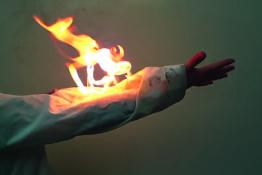What everyone should know about archeans
Issue 349 | Page 37 | Published Jun 2013
Description
For many years biologists supposed that one group of microorganisms, which they called archaebacteria, were an ancient and primitive type of bacteria. Following biochemical analysis of their RNA and other cell components, it soon became clear that their distinct features merited classification in a separate domain, the archea. From an evolutionary viewpoint, they are of considerable interest, not being in any way dependent on photosynthesis but deriving their energy from chemical reactions or heat sources. On the primitive Earth, archean cells, acting as hosts, ingested and retained active photosynthetic and aerobic bacteria.
More from this issue
This Science note looks at the way that the shapes of simple molecules can be explained in terms of the number of electron pairs in the valence...
The chemistry behind practical special effects in the film and television industry is discussed, along with examples of commonly used chemical...
A traditional method of demonstrating the pinhole camera is to make a small hole in the bottom of a cardboard box with an open top, and stretch a...


